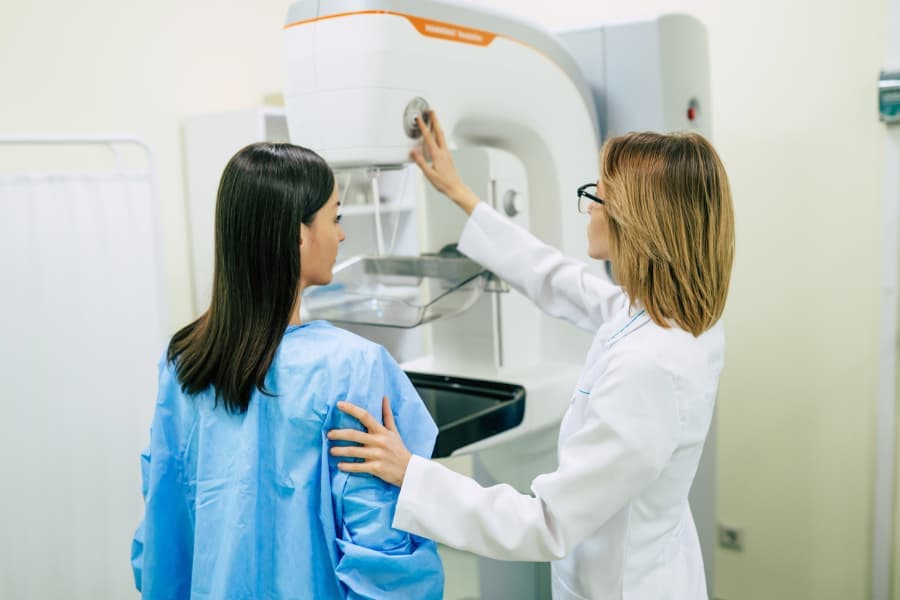Mammograms help screen for and locate abnormal areas in the breast that may be cause for concern. However, many patients fear that the process will be painful. Richmond University Medical Center is proud to provide a Breast and Women’s Center in Staten Island, New York, that offers comprehensive services, including mammograms, exams, biopsies, and more. The highly trained and dedicated team of physicians and radiologists provides every patient with compassionate and customized care. Here is some insight on what to expect at mammography appointments.
What Does a Mammogram Look for?
A mammogram is an X-ray image of the breast that is used for screening and diagnostic purposes. They are used to check for abnormal areas in the breasts that may be cause for concern. Mammograms cannot determine whether an abnormal area is cancer, but they can assist health care providers in determining whether additional testing is required. The following are the most common types of breast changes discovered with a mammogram:
- Calcifications
- Masses
- Asymmetries
- Distortions
These changes are not always a cause for concern but can allow for early detection and treatment if they happen to be concerning.
What to Expect During a Mammogram
Mammograms are performed using an X-ray machine that only looks at breast tissue, which uses lower doses of radiation than traditional X-rays. In today’s day and age, digital mammograms are much more common than traditional mammograms saved on film. There is also a newer type of mammogram being used more often, called a 3-D mammogram or digital breast tomosynthesis, which provides a 3-D image of the breast and can be used when the patient has dense breasts.
At a mammogram appointment, the patient will undress from the waist up and may have stickers placed on their nipples. The technician may also use stickers to mark areas of the breast with birthmarks, scars, or other marks to prevent confusion if they appear on the image. They will then place your breasts one at a time on the imaging plate. The other plate will compress or flatten the breast to spread the tissue apart and allow for higher-quality images. The technician may reposition the breast to capture images from different angles. If results from a mammogram show anything concerning, the physician will reach out to schedule further testing. Learn more tips about preparing for a mammogram here.
Mammograms are a very common procedure for women, but they can be daunting for those who have never had one. Every experience varies, and some women may experience mild pain, while others do not. The majority of women may feel some pressure or discomfort during the imaging process, due to the plates pressing on the breast, but it should only last for a short time. However, occasionally some women will experience more moderate pain during a mammogram. Whether a patient experiences pain or not depends on various factors, including
- The size of the breasts
- The relation to the patient’s menstrual cycle
- The positions used for the mammogram
- Pain tolerance
If a patient knows they have a low pain tolerance or has experienced pain or soreness during a previous mammogram, they can take over-the-counter pain medication, like aspirin or ibuprofen, to help ease the pain. Wearing a sports bra or bralette is recommended, rather than an underwire bra, to further lessen the chance of discomfort.
Schedule a Mammogram Today
Overall, a mammogram should not cause severe pain, and mild tenderness and soreness should fade rather quickly. The benefits of being tested early for breast cancer outweigh the mild discomfort that women may experience, but if lasting side effects occur, they should contact their provider.
Women throughout Staten Island, NY, can access complete and customized women’s healthcare at Richmond University Medical Center’s Breast and Women’s Center. This center provides state-of-the-art imaging services including mammograms, 3-D mammography, breast MRIs, breast ultrasounds, biopsies, and more to help screen for and detect abnormal breast changes. Contact the Breast and Women’s Center at Richmond University Medical Center today to schedule a mammogram, or download the brochure to learn more about breast cancer care.




